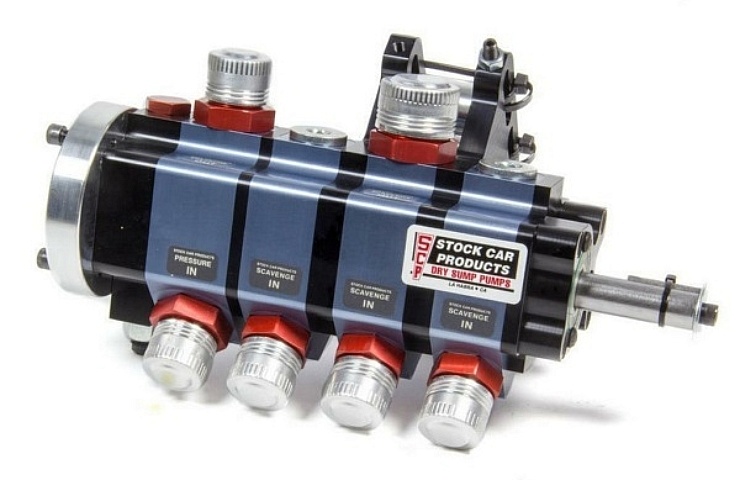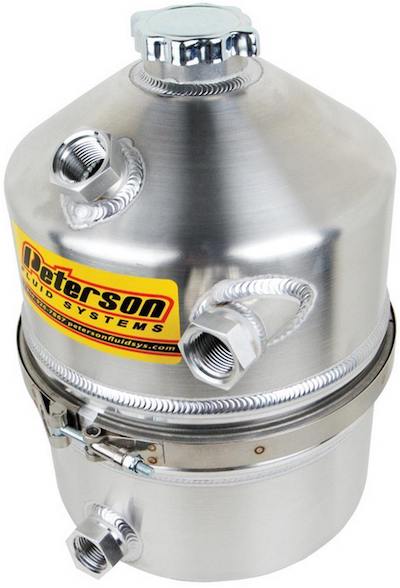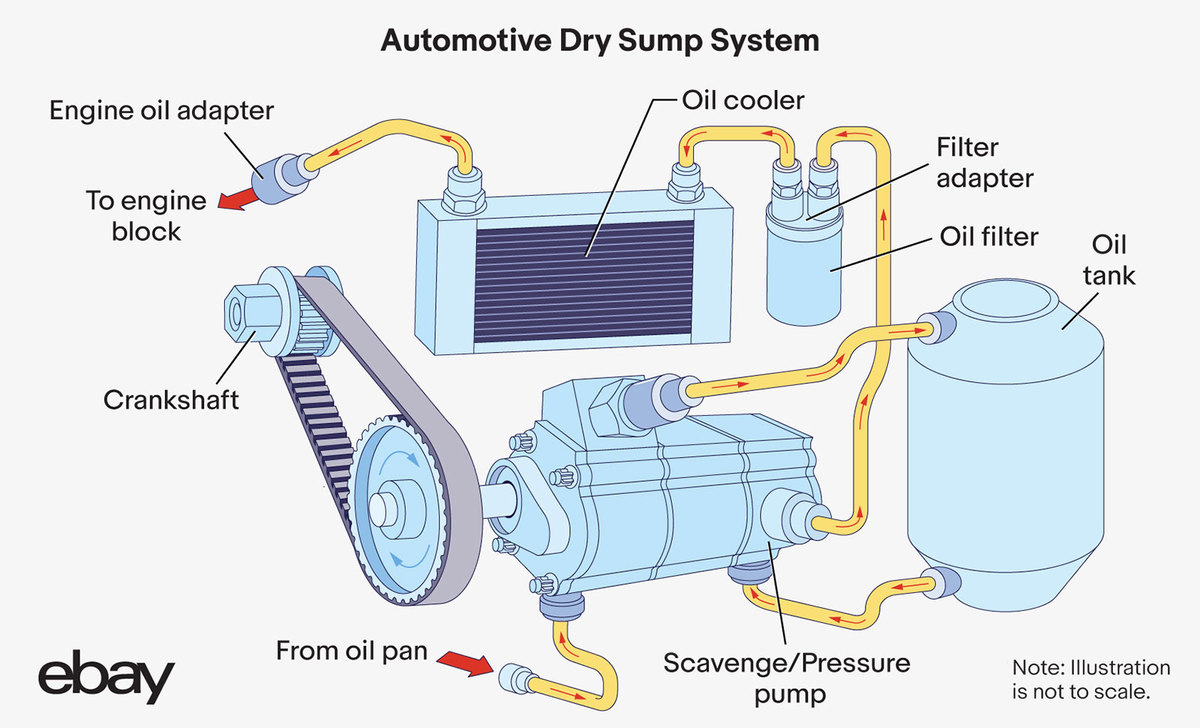Contents
Dry Sump System Basics
In a typical car engine, the wet sump holds the oil in a pan when the engine is off. A pickup is submerged inside the oil and supplies the engine with a single pump.
The dry sump system uses a separate holding tank outside of the oil pan, and it uses two pumps. Instead of the sump at the bottom of the engine block, an oil reservoir or holding tank is placed elsewhere in the engine bay.
The first pump in the dry sump system is the scavenge pump, which pulls the oil from the crankcase through metal piping. It also pushes the oil to the remote reservoir or holding tank. The second pump pushes the pressurized oil from the tank into the engine and through the passageways.
Shop now for dry sump systemsMain Components of a Dry Sump System
With a dry sump system, you must relocate the reservoir from below the engine block to a more convenient location. This location depends on your vehicle type and how much room is available in the engine bay.
The dry sump system also needs more pumps. The standard practice is to have one scavenge pump and one pressure pump, but many manufacturers recommend using at least two scavenge pumps, if not more.
A pressure relief valve is also needed to regulate pressure in the engine. This design isn’t much different from the pressure relief valve in a wet sump system. Too much oil pressure causes leaks and damage to the motor.
Finally, the dry sump needs to be driven by the crankshaft with a round-tooth belt drive. The only time this positive drive type isn’t required is with the scavenge-only pump, which the serpentine belt can drive because it has a lighter load.
Shop now for dry sump systemsDry Sump Advantages and Disadvantages
With a dry sump setup, you can mount the engine lower within the car thanks to the lower-profile pump. You can also move the external reservoir. Both options result in a more advantageous weight distribution for optimal handling.

Moroso dry sump engine oil pan for a small block Chevrolet V-8
The dry sump setup has many advantages, especially for high-performance vehicles:
- Increased engine reliability due to consistent oil pressure
- Increased oil capacity if a larger reservoir is installed
- Low oil pressure occurs less often
- Less likelihood of engine oil starvation under high g-force cornering
- Increased horsepower due to reduced friction within the oil pan
- Better control of oil temperature
- Increased vehicle stability and handling due to a lower center of gravity
- Easier maintenance and replacement
- Dual pumps remove gasses trapped in the oil
There are some serious disadvantages to consider before making the upgrade. Here are the main cons:
- Additional cost
- Systems are complex
- Added weight
- More oil and maintenance are required
- Drivability issues with an improper setup
- Difficult to fit equipment into a small engine bay
- Requires a dedicated drive belt, which can be an issue with a front-wheel drive car
Many of these points aren’t too problematic for people hoping to get more performance out of a car.
Do You Need a Dry Sump System?
Even with those few disadvantages, the dry sump performs better than the conventional wet sump. Most cars benefit from the upgrade if the vehicle has room for a dry sump setup.

Barnes Systems Small Block Chevrolet V-8 – 3 Stage dry sump pump
However, there’s a particular case when the dry sump makes a lot of sense. The system works better if you have a vehicle that deals with high g-forces during cornering, strong braking, or rapid acceleration. With a wet sump configuration, the oil sloshes around and away from the oil pump pickup tube. This leads to oil starvation and a list of performance issues.
Choosing a Dry Sump Pump
If you plan to buy a dry sump pump, there are some considerations:
- Oil weight
- Oil consumption at idle and operating temperature
- Operating temperature range
- Desired vacuum level
An experienced mechanic can determine how many pressure and scavenge stages are required. You must also figure out the types of rotors or gears for the pump drive ratio you hope to achieve. Drive belt type and mounting configurations also need to be considered. There are choices available for pump materials, but coated aluminum tends to be the most popular option.
Remember that the regular oil change must be performed differently since this system doesn’t store the oil in the pan. You need to warm up the system before changing the oil, then remove the oil from the reservoir, lines, and cooler. You also need to replace the oil filter with each change, but that’s not much different from the wet sump setup.
Shop now for dry sump systems






